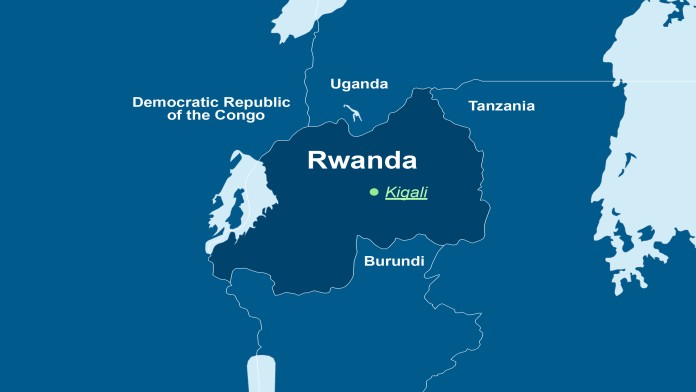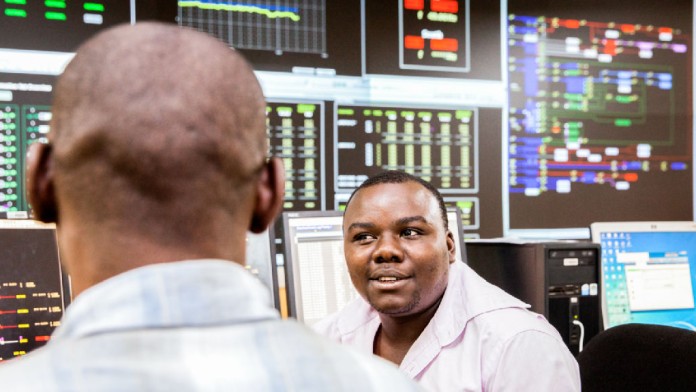
As of: 10/2022
Rwanda has been using digitalisation for years to improve its national and local administration. This is now being further expanded: Digital administrative processes should lead to more citizen participation, (missing) progress should be made visible and money flows be made transparent. This should benefit not only the administrations themselves but above all the poor rural population. The aim is to achieve better management and more efficient planning of local infrastructure and social security programmes while at the same time opti-mising the necessary resources.

Rwanda is one of the few countries in the world to have achieved almost all the Millennium Development Goals: for example, child and maternal mortality has been reduced on a large scale. Despite all efforts and successes, around 40 percent of the population in Rwanda still live below the poverty line.
Further reducing poverty is therefore a central concern of the government. Although Rwanda has done a great deal in the past 20 years to improve its national and local administrations and has made particular progress in digitalisation over the past five years the obstacles are still considerable: inefficient financial management, inadequate public administration services in the districts – especially in rural areas – and inadequate basic infrastructure in the countryside. There are still too few simple digital solutions for giving the local population a greater say on where public money should go and where roads, schools, and health centres are most urgently needed.
With the project "Digitalisation and support of the lower administrative levels", the Rwandan government is transferring more responsibility for the development of the country to the local administrative levels. This is supported by the Rwandan decentralisation fund LODA (Local Administrative Entities Development Agency). The core of the project is the monitoring, evaluation and information system MEIS, which has been in existence since 2016 and in a first step digitised municipal services and processes.
Now, the MEIS is to make administrative processes – especially the planning and management of investments in local infrastructure and services such as social welfare – even more efficient, effective and transparent. This will benefit the employees of local authorities in their daily work. In e-learning courses, they will learn how to prepare feasibility and environmental impact studies, organise procurement or monitor the progress of ongoing projects. The digitalisation project, however, has a special focus on the social security of the poorer population. In order to better understand the needs of households, administrative staff will be equipped with mobile devices. They will be able to collect data on site and feed it directly into the system where it will be used in accordance with data protection regulations. This not only saves double work when entering handwritten notes. It also enables government support to reach its addressees as quickly as possible. Be it social welfare or paid working days in public-works projects – the payment of these benefits can now reliably be handled by the improved MEIS.
Via an e-participation platform local people shall also suggest directly where new roads, schools or health stations could be built. And they will be able to track the project status online in the future: How many kilometers have already been built, how much money has been spent and where to? Are there disruptions or deviations from the plan? All phases will be digitally recorded, managed and monitored.
A data warehouse is also to be set up. In addition to the MEIS data, data from other sources such as the national health system will also be included. This would make it possible, for example, to check in accordance with data protection guidelines whether the increase in diseases in a region is related to a lack of sanitary facilities and clean water – in other words, it will provide a basis for targeted planning of the corresponding infrastructure.
Overall, the expansion of the digital infrastructure contributes to improving living and economic conditions in the rural regions where the majority of Rwanda's population lives. It leads to greater citizen participation and a greater say in political decisions, makes progress visible, money flows transparent and reduces corruption. In addition, the bodies of local self-organisation – village assemblies or the culturally customary community services – are being strengthened in a targeted manner.
The project contributes to the achievement of these following United Nations Sustainable Development Goals:
SDG 9: Industry, Innovation and Infrastructure
KfW Group
KfW Development Bank
KfW Office Kigali, Rwanda
Department for Digitalisation, Innovation and Communication
Share page
To share the content of this page with your network, click on one of the icons below.
Note on data protection: When you share content, your personal data is transferred to the selected network.
Data protection
Alternatively, you can also copy the short link: https://www.kfw-entwicklungsbank.de/s/enzBuAPR
Copy link Link copied